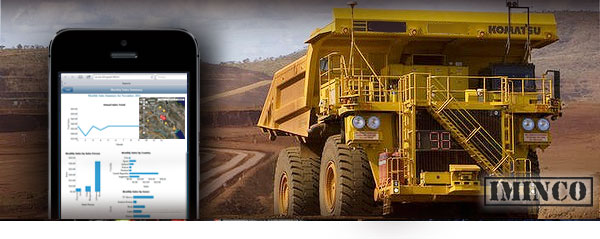 When we think of mining jobs, it conjurers up images of massive haul trucks and all manner of machines working together on huge open-pits.
When we think of mining jobs, it conjurers up images of massive haul trucks and all manner of machines working together on huge open-pits.
However, a new breed of Information Technology miner is emerging – the specialised computer systems operator.�
Plenty of technology jobs in the mines
For many people who are not involved in the mining industry, what happens out on remote mine sites is well hidden from public view. If it’s out of sight, then it’s out of mind.
While mining companies in Australia reinvent themselves in order to remain competitive in a global market, there is a new focus on integrating the latest technology to improve operational efficiency and trim costs.
Like it or not, technology will replace some of the existing jobs that require an operator to be on-site – however, all is not lost. We hear of mining job cuts, but have we really been made aware of the impact of technology in terms of creating new jobs? In a recent report, the findings suggested that for every manual mining job lost, there were 2 IT related jobs created.
“highly-trained people needed to operate the equipment”
Whether you believe that or not is irrelevant, although it makes sense that in order to take advantage of technology, it takes specialist and highly-trained people to operate the equipment.
New technology sweeping mine sites in Australia is creating jobs for sure. Every day we read about investment in computer systems, hand held devices, collaboration tools, data-sharing and vehicle & equipment monitoring systems that are designed to keep existing workers safe from harm, increase productivity and to extend the life of existing equipment.
“massive cost saving benefits”
Many of the big mining companies in Australia are already reaping massive cost saving benefits from rolling out technology across�their mining operations.
Fortescue Metals Group – technology innovators
Take for instance, Fortescue Metals Group who are the third largest iron ore mining company in Australia, operating in the remote Pilbara region of Western Australia. It’s expected Fortescue will reap some $30 million in annual cost savings after it has implemented its new real-time reporting of productivity on its mine sites. The data collected is pushed out to the mobile devices of its field operations team at their Cloudbreak iron ore mine.
“$30 million in annual cost savings”
These reporting tools, which were rolled out towards the end of 2013, help mining supervisors view the progress of operations in real-time. They then use this information to measure equipment performance against established production plans. All of this information is delivered to a custom-built dashboard on a Windows-based tablet device.
To get an idea of how the system can be used, imagine the huge fleets of haul trucks traversing the mine site. Data is fed from collated material via a secure wireless network that tracks dump trucks, loaders and other mining equipment, as well as the SCADA systems that control and monitor fixed plant.
“optimise the fleet and maximise productivity”
Supervisors use the data to identify and fixe any issues as they arise. The data can be used, for example, to move trucks from different pits to optimise the fleet and maximise productivity.
Before the technology was introduced, supervisors had to wait 12 hours to receive their daily reports which were manually created in Microsoft Excel at the end of the day shift.
The raw data now at the fingertips of the supervisors� is also simultaneously seen on the screens of IT staff using desktop computers at Fortescue`s Perth headquarters.
Since the rollout of the mobile dashboards, Fortescue has looked to quantify how access to near real-time data in the field can drive better decision making on-site.
Technology investments pay big dividends
Over the first three months of 2014, Fortescue`s fleet of RH340 diggers each produced over 5500 tonnes of iron ore per hour. This was an improvement of 11 percent. The massive fleet of haul trucks are now hauling over 70 more tonne-kilometres per truck every week.
Fortescue chief information officer, Vito Forte, said driving productivity improvements was helping the company achieve a key goal of moving down the global cost curve.
“The lessons learned from this project are being applied to numerous other projects that can have direct, measurable benefits to Fortescue,”� Forte said.
“Feedback from the users was a critical component of the delivery cycle, and led to various improvements and upgrades,”� Forte said.
Forte said the role of IT at Fortescue is to “enable the business strategy”�. Which means in all reality, without innovation and technology, production targets would never be met.
Computer and IT jobs in the mines
Computer and IT jobs in the mining industry will be on the rise. Mining companies must look to technology to improve production rates and drive down operational costs. Remote management of fleets of mining trucks, loaders and production plants will be the norm in the next 5 to 10 years.
There are a range of IT jobs available on mine sites. These include, computer operators, network specialists, programmers, database administrators, front-end developers, server specialists, app developers and high-level system architecture managers.
The mines of the future will be automated to a certain degree – sign up for iMINCO Project News for the latest mining news and information from Australia’s resource sector.



